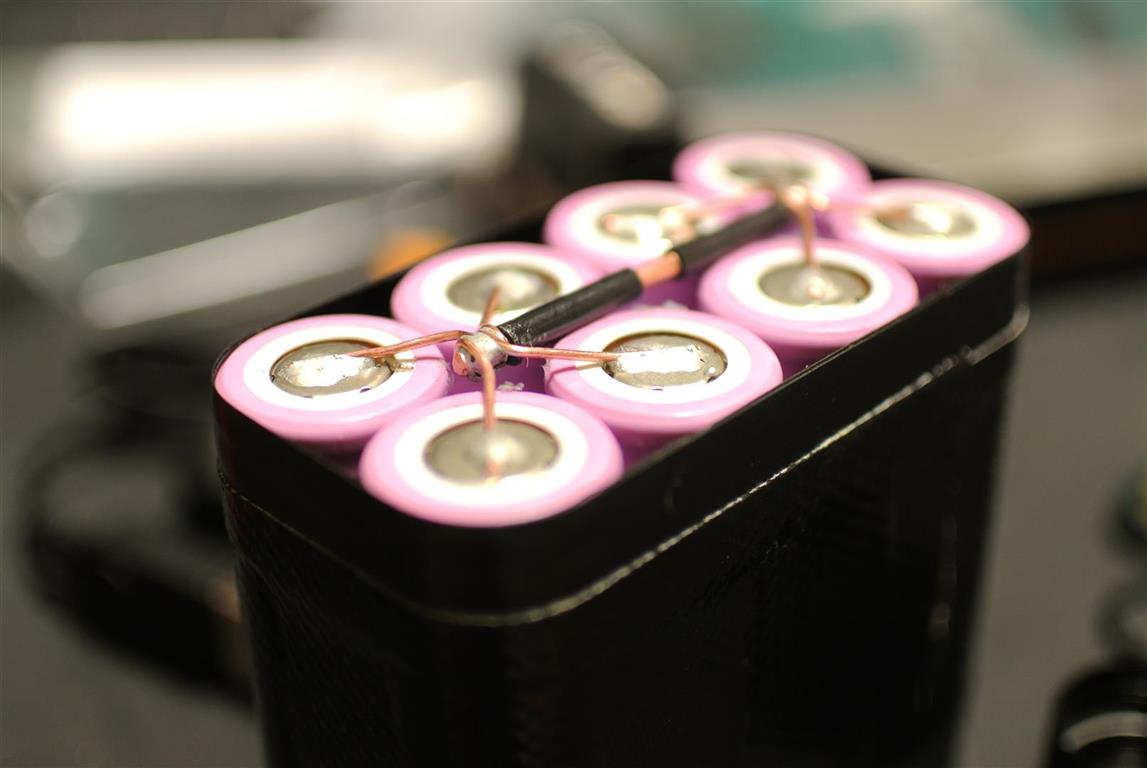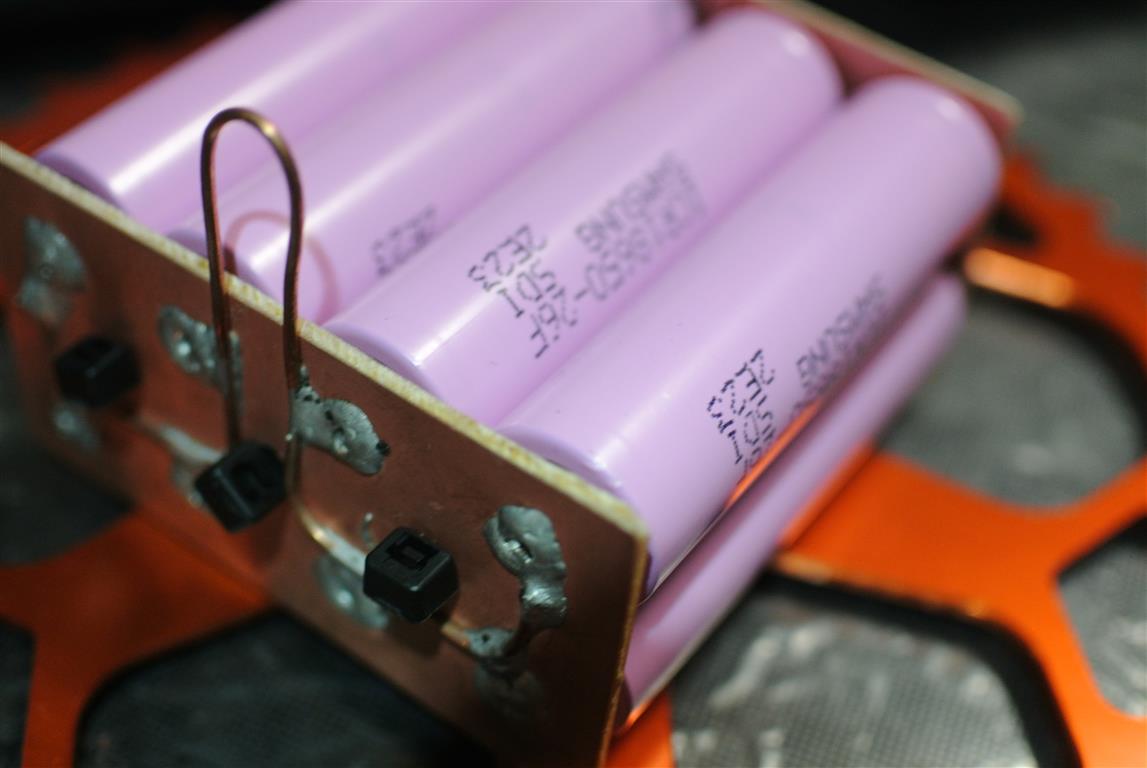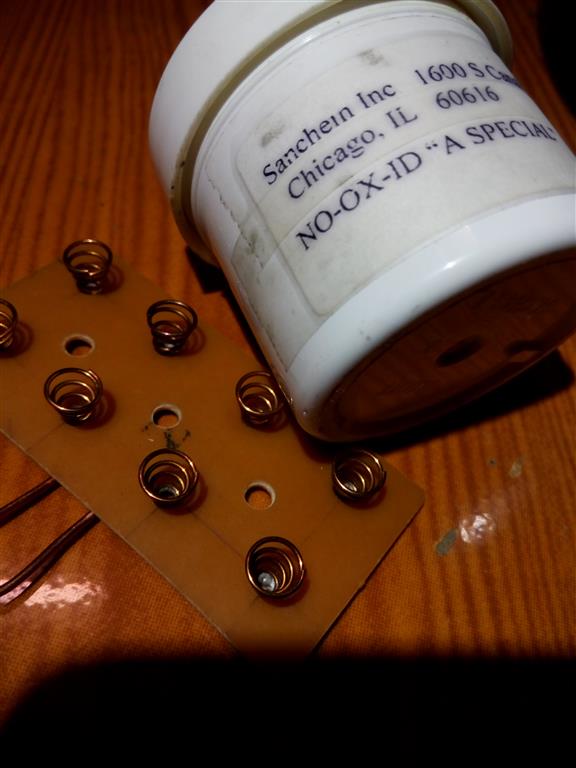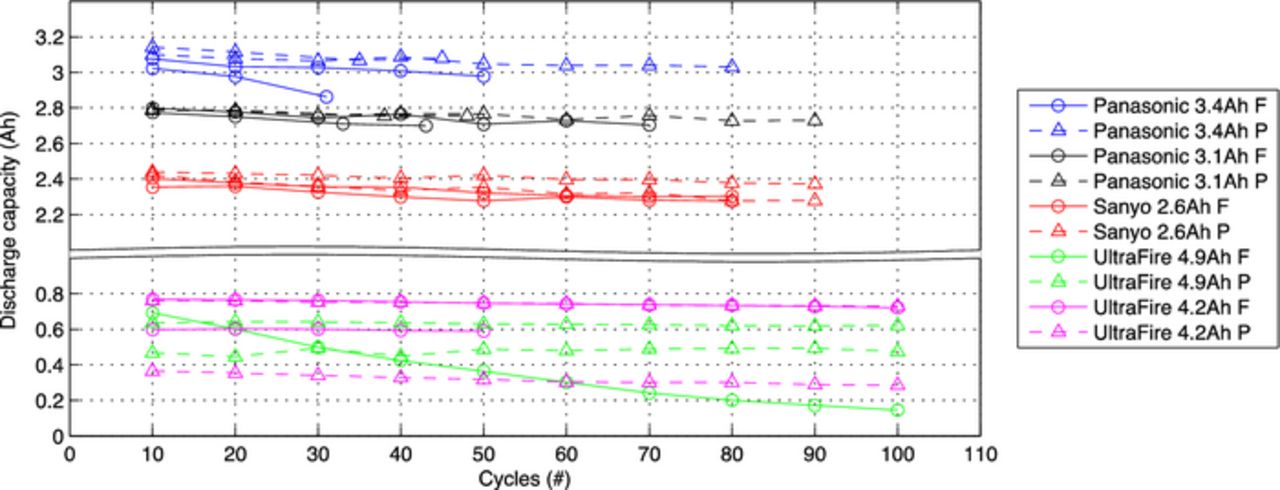Overclocker
10 kW
[youtube]0ZRwMXL-Rvs[/youtube]

about 10 months ago i soldered together twelve 8P packs (samsung 26F cells). as shown above the soldering was done very quickly to minimize damage.
i set aside 8pcs of the samsungs that i DID NOT SOLDER TOGETHER
now after about 2000kms on the 12s8p pack i decided to see how much deterioration occured COMPARED TO THE UNUSED UNSOLDERED CELLS. so i hacked together a simple 8P holder (spring contact for negative side) for the UNSOLDERED CELLS, shown here:


i charged both soldered and unsoldered cells on the icharger 106b+. 4.17v end voltage. discharged to 3.10v at a low 4.0A (to minimize effects of contact resistance on the unsoldered cells).
RESULTS:
SOLDERED: 19,910mAh
UNSOLDERED BRAND-NEW CELLS: 20,278mAh
NOTES:
the SOLDERED cells had about 2000 kms on them, probably 25 cycles? LVC was set to about 3.30v per cell. mostly charged to 4.10v. just a couple of times to 4.20v.
CONCLUSIONS:
1) the tiny difference could probably to attributed to normal li-ion wear.
2) soldering using my process doesn't seem to harm cells

about 10 months ago i soldered together twelve 8P packs (samsung 26F cells). as shown above the soldering was done very quickly to minimize damage.
i set aside 8pcs of the samsungs that i DID NOT SOLDER TOGETHER
now after about 2000kms on the 12s8p pack i decided to see how much deterioration occured COMPARED TO THE UNUSED UNSOLDERED CELLS. so i hacked together a simple 8P holder (spring contact for negative side) for the UNSOLDERED CELLS, shown here:


i charged both soldered and unsoldered cells on the icharger 106b+. 4.17v end voltage. discharged to 3.10v at a low 4.0A (to minimize effects of contact resistance on the unsoldered cells).
RESULTS:
SOLDERED: 19,910mAh
UNSOLDERED BRAND-NEW CELLS: 20,278mAh
NOTES:
the SOLDERED cells had about 2000 kms on them, probably 25 cycles? LVC was set to about 3.30v per cell. mostly charged to 4.10v. just a couple of times to 4.20v.
CONCLUSIONS:
1) the tiny difference could probably to attributed to normal li-ion wear.
2) soldering using my process doesn't seem to harm cells


